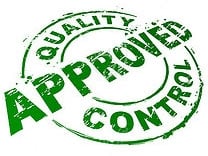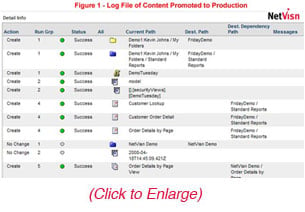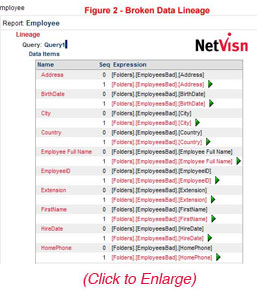By Rick Ryan - Envisn, Inc.  Purpose of this blog article is to share with you the following:
Purpose of this blog article is to share with you the following:
- The role of multiple content stores in a typical IBM Cognos BI installation
- How these content stores are similar and how they are different
- Best practices for managing multiple content stores
As customers move to take advantage of what’s new in Cognos 10 the role of the content store is even more critical. It has more in it and more users relying on it. Most Cognos BI installations will have three distinct environments:
- Production – Delivering BI content to end users.
- Test or Pre-Prod – Validating the functional readiness of new or changed content.
- Development – Authoring new content or modifying existing content.
Some installations may have additional environments in the BI delivery chain.Some may have less. In small to mid-size installations, for example, it’s not uncommon to see just a production and a development environment. In this case development also serves as the test environment.
We have also seen instances where there is only a production environment. Development and testing co-exist with production in a single environment. This is high risk and not recommended as it is too easy to make mistakes with content around things such as security, data sources, etc. Content that has a different purpose at a given point in time should be in a different environment.
Production Content Store
In a production BI environment there is not a lot of room for error. For environments where there are hundreds or thousands of users there are almost always policies and procedures which dictate what can and cannot be done in the production environment and how it must be done. Some of the more important best practices include the following:
- Content is organized for easy access by users:
a. No deep folders or multiple clicks to access content
b. Content is clearly labeled reflecting what it is
c. Structure is uncluttered and easy to navigate - Criteria in place for what’s ready for production
- Rules for managing My Folders
- Backup and recovery procedures are in place and routinely tested
- Capability for managing and validating security real-time
- Data sources are validated on an on-going basis
- Unused content and excess output is removed
- Metadata management tools
- Managing schedules, triggers, distribution lists, etc.
- On-going monitoring of content and user usage
Test or Pre-Production Content Store
The Test or Pre-production environment is similar to production but is also different in many ways. Best practices here include:

- Security should represent production
- Data sources are active (versus what are usually static in dev)
- Need the ability to compare to production for:
a. Security
b. Metadata
c. Data sources
d. Content counts (getting rid of old or unneeded test content) - Test criteria are in place (when is it ready for production?)
- Record of what has completed testing
- Metadata management tools
- Log file of what has been moved to production (who-what-when) -See Figure 1
- Version control for content
- Major focus on change management
- Backup and recovery procedures are in place and routinely tested
- Usage tracking (is the content really being tested?)
Development Content Store
The development content store is where all new content is authored or created. Here the most important best practices include:

- Security model reflects development environment only
- Policies and procedures designed for development only
- Data sources are typically static but representative of production
- Criteria in place for moving content to Test or Pre-prod
- Log file of what has been moved to Test or Pre-prod
- Folder structure reflects author/developer needs
- Metadata management tools
- Tools in place to assist authors/developers in diagnosing problems in development content -See Figure 2
Summary
There are a couple of themes that run through the best practices of all environments:
- Change management is a constant – This is by far the major activity for Cognos administrator and they need to be able to handle the activities associated with this quickly and accurately. And this means they need tools that can help in this process. The tools should help in all areas of change management and enable you to work in all environments and across them at the same time.
- There are key things you need to monitor and manage as an administrator. What are they? They may differ from one installation to another but they may include:
- Usage – content and users
- Growth in content and users
- Potential problem areas such as broken lineage, missing objects, etc.
- Security – validating on a regular basis
- Data sources – right ones in the right places
What are the key things for your environment? Think about what you are already doing and build your own list from there. The important thing is to identify and use them.
© 2011 - Envisn, Inc. – All rights reserved
Image by Seattleclouds.com





